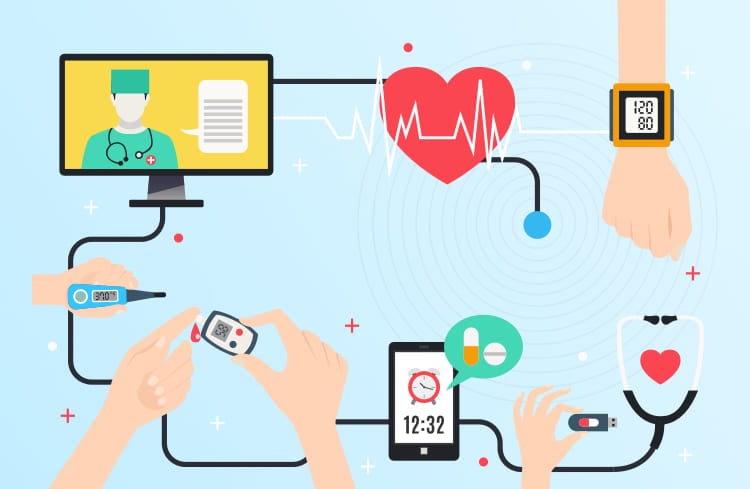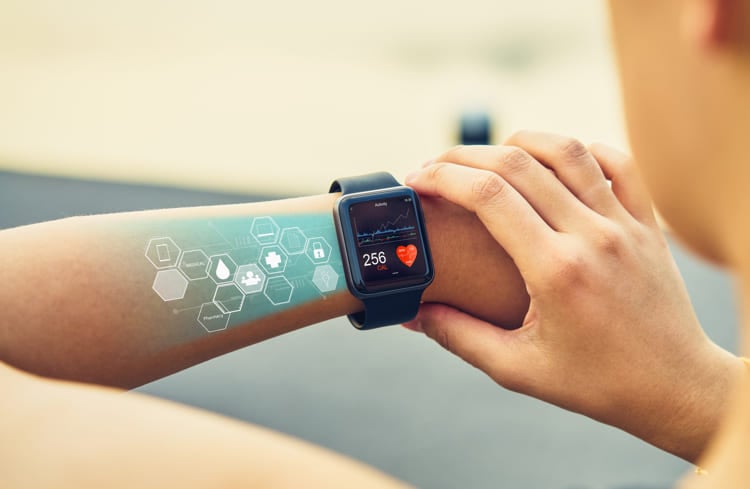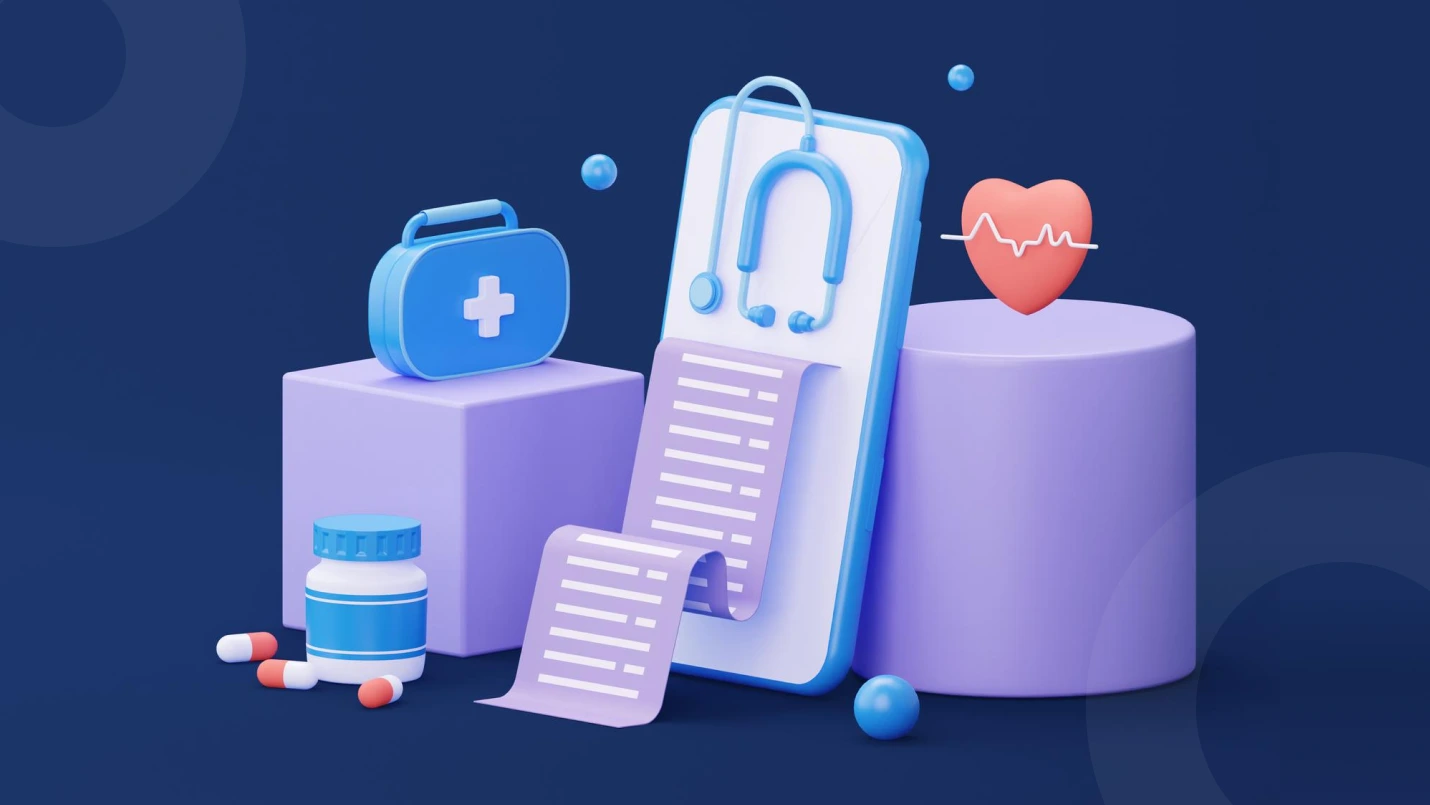The presence and the utilization of various mobile healthcare solutions and applications are proof enough that digital transformation in the healthcare industry is stepping up, just like most other industries.
The digital health market is expected to reach $536 billion by 2025, growing at a cagr of 13.4%! – xcubelabs
To stay ahead of the competition, it’s important to leverage the digital and move towards improved patient results, value-based care and cost containment.
However, since this camaraderie is a new one, there are challenges that the solution providers, as well as users, face. To ensure that your transition into a more mobile-friendly business outlook happens smoothly, here’s an in-depth look at how to survive the top challenges facing the propagation of mobility within the healthcare industry and healthcare application development.
But before we do so, let’s look at what mHealth is and how it influences both healthcare and mobile app development.
What is mHealth (Mobile Health)?
This is how a PWC report explains mHealth:
Doctors – Hospital Visits + Mobile Technology = mHealth
The market of mHealth is going to expand further on a massive scale in the coming years. With the establishment of several online start-ups, mobile healthcare applications are getting traction in the healthcare industry. Also, the rise in adoption of mHealth correlates with factors such as enhanced penetration of smartphones, high internet use, and easy accessibility of mHealth apps. Thus, it is also opening new opportunities for apps developers in the mobile health industry.
The global mHealth market size is expected to reach USD 316.8 billion by 2027, registering a CAGR of 29.2% over the forecast period. – Grand View Research
Why is mHealth Preferred over eHealth?
Lest you confuse the two, eHealth and mHealth are two different practices, and although related to the same field, they have some distinctly different qualities.
- mHealth has a more personal approach since we are more attached to our mobile gadgets. This also makes custom mobile apps for Healthcare indispensable.
- Although the eHealth platform has a broader reach, one finds a more concentrated audience for mHealth. It has led to more advancements in the field of healthcare mobile app development.
- Another critical factor that makes mHealth more favored is its localized appeal. Medical practitioners are now able to communicate better on forums, and so are patients. With mobile healthcare solutions, one can witness better connectivity amongst patients and doctors.
Challenges that Plague Mobile Healthcare Solution Providers
The challenges faced by healthcare service providers and healthcare mobile app developers arise from both internal and external sources. Some of them include:
Security
Patient information is a vital part of the puzzle when it comes to swiftly diagnosing health problems, as well as resolving billing and other payment issues. However, over 50% of all healthcare institutions fall prey to at least one cyber-attack. And one in three of these attacks is a success for the attackers.
How to Overcome
This situation makes it imperative to have in place a mobile storage and retrieval system that handles sensitive data and is resistant to security threats and attacks. Not having one such system in place is a significant roadblock for mobile healthcare app providers.
Complexity in Implementation and Integration
Despite the fact that a large part of the population (including doctors and hospital staff) owns smartphones and other mobile devices today, the complexity of integration and implementation remains a challenge.
Mobile healthcare applications which are difficult to integrate and implement with the existing systems and complicated to use, defeat the purpose of efficiency. The simplicity of deployment and ease of use are two factors that developers, mobile healthcare solutions providers, as well as users prefer.
How to Overcome
Developers must create applications that sync with the existing system that doctors and hospitals use; they shouldn’t necessitate overhauling of the system and should be easy to use on both ends – healthcare providers as well as patients.
Patient Engagement
Transparency in the interaction between healthcare providers/doctors and patients is the pulse of mobile healthcare services. However, an incredible number of applications end up feeling like a monologue and fail to engage patients. If the app fails to enhance the medical experience of the individuals through vital information and data, it fails the purpose.
How to Overcome Them
To engage patients, it is not only necessary to resolve their pain points, but also to provide them with the health and treatment-related data and information they need. The healthcare app must offer user-friendly features such as the ability to schedule/cancel an appointment, request prescriptions, and easy access to medical records. Also, a 24/7 consulting service should be made available if a patient is in need.
Difficulty for Users
Just like the doctors, patients also turn away from applications of mobile healthcare solutions that are complex and difficult to use. Unintuitive and hard-to-comprehend digital products add to the frustration of the patients instead of easing things for them.

Also, the fact that patients could be accessing the application on a score of devices demands for an experience that is suitable for all interfaces. And, various tools like blood pressure monitors, fitness bands, glucometers should connect to these applications. The challenge is to make integration, use, and interpretation a cakewalk for the patients.
How to Overcome
Developers must keep ease of use in mind while developing the apps. User experiences input is something that healthcare providers should investigate. The apps should not only take into consideration the availability of several devices in the market, but also the scope for the integration of medical and fitness devices with the app.
Health Awareness and Literacy
A big challenge for healthcare providers is to think from the perspective of the users. While the medical fraternity is health literate, the patients may or may not come with a reasonable medical understanding.
How to Overcome
The solution lies in studying the needs and the health literacy level of the target audience and then delivering such an experience as resonates with them. Healthcare providers either need to adapt to the audience’s health literacy level or find a way to help them make sense despite the gap in knowledge.
Patient’s Concern over Data Privacy
While collecting data is extremely important for healthcare providers to understand their customers and cater to them efficiently, the patient’s concern over the privacy of their information is genuine. It is imperative to impart a sense of security and uncompromised privacy to patients.
How to Overcome
It is essential to ensure that there is ignorance on rules set by the Health Insurance Portability and Accountability Act’s (HIPAA) or General Data Protection Regulation (GDPR) for data privacy. Healthcare mobile apps must comply with their guidelines and safeguard the patients’ privacy.
Why Is Digital Transformation in Healthcare Essential?
Mobility is firmly at the center of the healthcare industry’s future, and to reach out to the target audience, mobile healthcare solutions and healthcare application development are inevitable.
The digital health market is expected to reach over 200 billion U.S. dollars by 2020 driven mainly by the mobile health market- Statista
Digital transformation is a continuous journey that requires putting the customer (patient) at the center of the healthcare process. More patients than ever before, are embracing wearables like health bands and heart rate trackers. The task that mobile healthcare now has at hand is to be able to collate this data and render personalized experiences. It also needs to empower the customer to make an equal sense of this data to their use.

Of course, patient-centric care requires interacting with these individuals on their terms and via channels that they gravitate towards. So, having a strong mobile presence is a must if you plan on tapping into this trend.
As for the rising demand for quality data, mobile apps and digital products increase the volume of good data flowing upstream to healthcare professionals. Hence, it makes plenty of sense for the leaders in this industry to leverage these tools as they continue to optimize and refine the overarching patient experience.
Who’s Disrupting the Mobile Healthcare Applications Scene?
Apple HealthKit
HealthKit, combined with Health App, has brought about a significant change in the healthcare sector. It is an API that provides a central repository of health and fitness data from users of the iPhone and Apple Watch. After taking the due permission of the user, health apps communicate with the HealthKit store to access and share this data.
HealthKit can be termed as a collection of health data from users, which will help you form an amalgamated profile of your health. In simple words, all your medical apps, the ones for measuring your blood pressure, blood sugar level, weight, and other chronic medical conditions can all be mustered under one roof.
It also helps monitor your vital health stats such as the number of steps you covered in a day, your ideal weight and workout strategy. And to top it all, you can integrate your third-party applications in it too.
Don’t worry about securing your privacy and information accessibility zone; it is in the safe hands of Apple.
This apple won’t keep the doctor away; rather, it will aid you in keeping your medical contacts and other health-related assistance handy – a significant requirement in these times.
A great example that we can quote in this case is Medisafe, the leading mHealth platform for medication management addresses the problem of drug non-adherence. The app makes use of the Apple HealthKit API to help healthcare providers and patients to exchange relevant data and information.
How is Net Solutions Contributing to the Revolution?
Here’s how our experts developed an EMR Decision Support Engine for one of our clients that helped in automating and speeding up the process of diagnosing a disease.
Access the case study here to know how the EMR was built with decision-support engines and unique workflows.
Ready for Mobile Healthcare Solutions?
From developing mobile apps that are easy to use both for healthcare providers and patients, to maintaining a stronghold on security, there’s a lot that goes into this process. Gaining expertise is extremely important especially if you’re working on these apps in-house or without a strong knowledge of the best practices in digital product development.
However, failing to embrace the hard work and efforts needed to overcome these challenges and issues can potentially push your business towards failure considering that digital transformation is an irresistible force currently spreading not only in the healthcare industry but in every sector out there.
Fortuitously, with a trusted team of mobile development experts – there’s no reason why hospitals or medical institutions can’t survive these challenges and create a truly engaging digital experience as per the needs of the target audience. All you need is to get the wheels in motion and start moving towards your mobile-friendly future.



